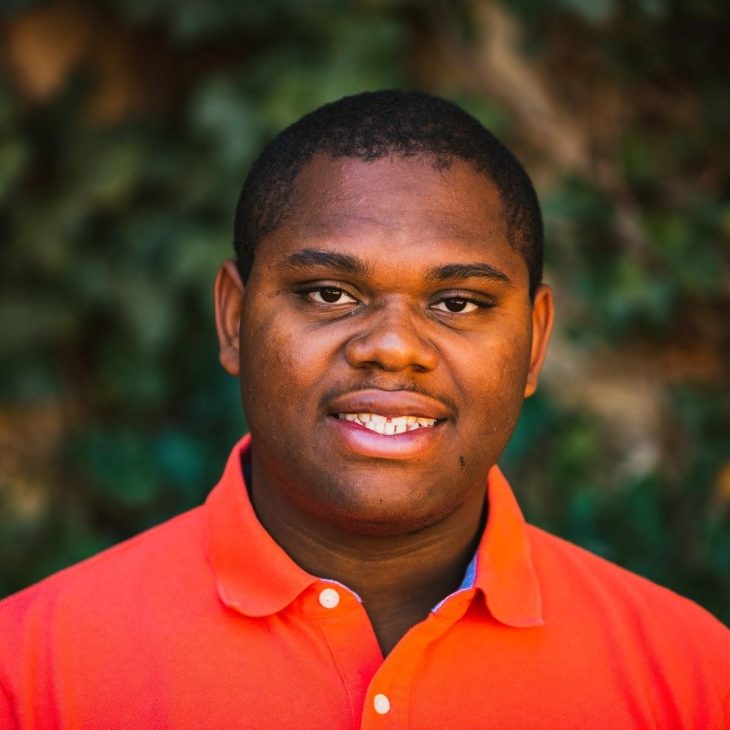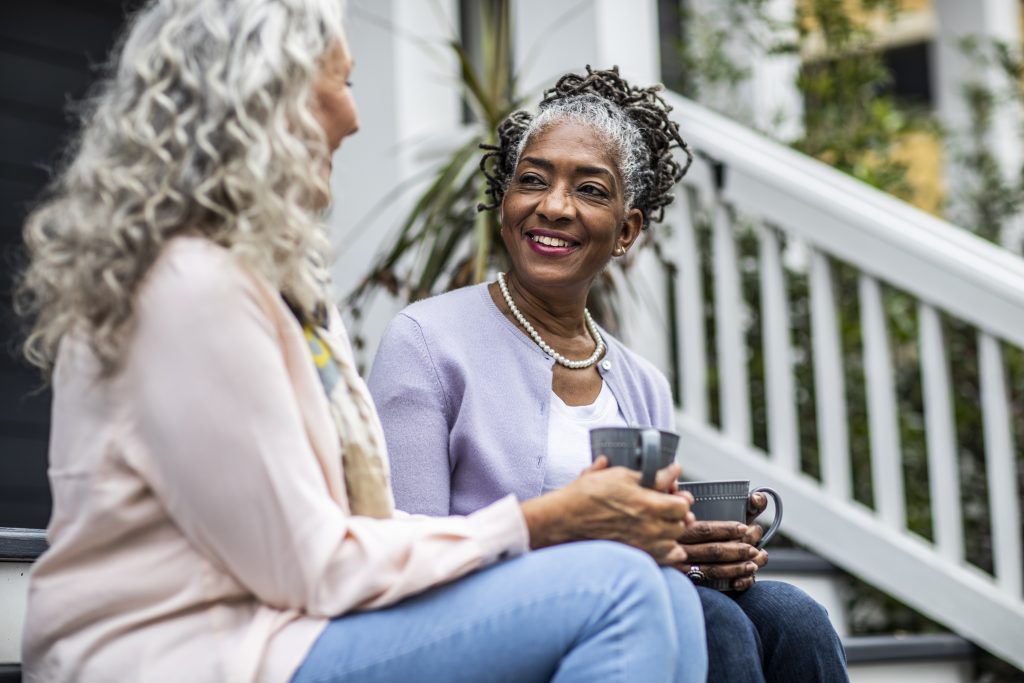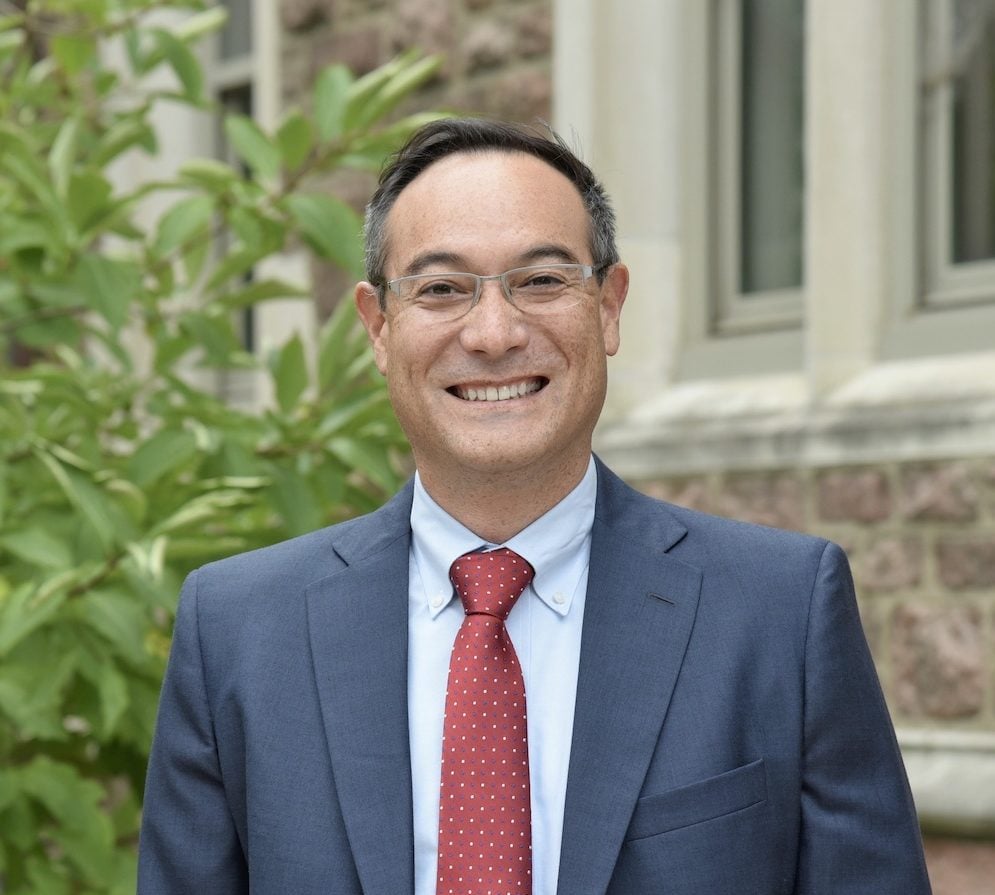Stanford Student Advocates for Black Lives
June 23, 2020

Micheal Brown unmuted himself, looked into his laptop camera, and began to speak to the 3,000 classmates, staff, and faculty who had joined Stanford University’s ‘Campus Community Vigil for Black Lives’ live stream on June 5. A virtual ‘Black Lives Matter’ banner provided his background as he challenged the gathered community, his deep voice wavering with emotion:
“Acknowledging and engaging with Black pain is difficult but necessary for us all to move forward and that’s why we’re here; to not understand it is one thing, but then to know and then not change is being complicit. We can and must do better, especially Stanford’s white and non-Black faculty, staff, and students.”
The vigil was hosted in the wake of weeks-long protests that have gripped the nation following the murder of George Floyd on May 25, at the hands of a white policeman. Students, staff, faculty, and other community members at Stanford had organized their own actions on campus to speak out against racial injustice. The virtual gathering made space for the question: what should Stanford University do better to fight for racial justice in the country, as well as how to make Stanford a better place for Black lives on its own campus? Micheal Brown has emerged as a central student voice in finding answers to those questions.
“My Blackness is important to me,” says Brown, a sophomore majoring in political science at Stanford. “The solidarity our Black community has received over the past few weeks has been overwhelmingly positive at Stanford, but there’s still a lot of negatives – like racial violence on campus, racial slurs used in classrooms, that need to be addressed.”
The disparity between Black and white lives in America is not foreign to Brown, who grew up in the southeast side of Houston, Texas, in a predominantly Black community. Brown was academically successful and attended school on the opposite side of town to a magnet program for gifted and talented students. Yet, Brown credits his own community for teaching him about Black history, leadership, and the Black experience in America. One of the integral community-building experiences for Brown was attending church with his family every Sunday.
“My faith as a Christian plays a huge, influential role in my advocacy work, as it encourages me to understand myself, the world, and deal with the world,” Brown shared and still finds himself reciting the Serenity Prayer, taught to him by his mother.
Brown attended Lamar High School in the Upper Kirby district of Houston, which serves the affluent neighborhoods of River Oaks and Montrose and is home to a diverse student body, including 75 percent from minority groups. During his sophomore year, photos of his fellow students in blackface surfaced with captions including racial slurs and the incident fueled Brown’s drive to become an activist and advocate for social justice issues – especially racial justice, mental health, and sexual harassment.
Micheal Brown became one of the most recognized high school seniors in the country, winning the Princeton Prize in Race Relations, Coca-Cola Scholarship, Gates Scholarship, GE-Reagan Scholarship, National Horatio Alger Scholarship, and the Ron Brown Scholarship, and was named a U.S. Presidential Scholar. In 2018, Brown’s story made national news for being accepted to all 20 colleges that he applied to – including four Ivy Leagues, on a full ride. In the end, he chose Stanford, where he continues to engage in advocacy work to create a better student experience for Black students.
“I am working with others to recruit more Black students on campus, and also fighting for them to have better lives here,” says Brown. “People need to understand that places like Stanford and Harvard are not just elite institutions, but also organizations that are associated with a lot of money and power. Fighting against the system isn’t always going to be easy, but if Stanford could lead the way and really commit to change – the others will follow, and that is the goal of my activism work on campus.”
At Stanford, Brown is a program associate for the Black Community Service Center, one of 15 undergraduate senators at the Associated Students of Senate University (ASSU), an admit-weekend co-chair for the Stanford Black Student Union and serves as a student leader and volunteer for various other advocacy groups on campus.
“I first met Micheal at a peacemaking circle between student leaders and university administrators. Coming on the heels of a series of difficult and painful incidents on campus, the circle was organized by students to form bridges of understanding and empathy between students and staff as we sought to cultivate a better, more just campus community and culture,” says Rev. Dr. Tiffany Steinwert, Dean for Religious Life at Stanford. “Micheal shared his story and his experience with poignant and unflinching honesty. In speaking his truth, he committed himself to the hard work of activism and advocacy. Micheal never hesitates to do the work he sees before him and the communities of which he is a part.”
One of the main issues Brown hopes to create change around is the racial profiling and policing that he and other Black students have faced at the hands of Stanford police.
“There’s always upgraded security at Black events, especially arts and cultural events. I’ve watched Black students running away when police cars have pulled up to them at night – fearing that something bad would happen to them. I’ve watched Black friends and students being chased around campus for smoking marijuana, while other students involved in underage drinking and other criminal activities have been ignored. This is the lived experience of Black students here,” says Brown, who recently spoke at a protest on campus which is a part of a campaign to defund Stanford police.
He adds, “I want to encourage everyone to take responsibility for actively standing in solidarity in holding the administration accountable, and ensuring we disconnect outside police forces from Stanford policing.”
Brown believes that change can happen on campus when non-Black community members and administrators offer their allyship and come together to really listen and amplify Black stories and experiences.
“Administrators at Stanford do hold students at high regard and are willing to work with us, but they’re also accountable to the institution for their decisions, so it’s tricky,” says Brown. “I appreciate their tireless work to raise our voices and concerns. But to make change happen, everyone at Stanford needs to understand the privilege and power of their position to help Black students stand for their rights.”
According to Brown, in the wake of the protests around the country, many people have become more understanding of what it means to be Black in America. “What I respect a lot about Stanford is that there’s a culture of collaboration and people coming together in moments of need to make change happen. There’s an understanding that it’s important to raise the voices of those who are most at risk and being respectful that we all have very different backgrounds.”
Brown encourages people to educate themselves on the current historical and political significance of the anti-racism movement, including recent Juneteenth observances that commemorate the end of slavery in the U.S. The holiday is even more personal for Brown as his cousin, Al Edwards, civil rights activist and former Houston legislator, helped Texas become the first state to observe Juneteenth as an official holiday.
“Advocacy work is a part of my family. My vision is that I will continue to create change so I can leave this world better than it was yesterday for my future generations,” says Brown.
In a letter addressed to his future self that was an exercise he was assigned in a writing class the week after George Floyd was killed, Brown decided he would not sugar coat the reality of what he had lived, how he was feeling, and his determination to fight for Black lives his entire life:
“But all I can do is exist. There are days on end where I can do nothing but cry and be sad as I watch my Black brothers and sisters being killed with no justice. My work on campus is rooted in justice and community, and the work I do now does not stop when I leave college. Trust me, this is the beginning. We’re here to tear it up. It doesn’t stop when the world shifts out of this moment. The work has only gotten started, and I plan to do work for the rest of my life.”
Share
Related Articles
American Civic Life
Higher Education
American Civic Life
We Commemorate, We Commit: Out of Catastrophe, a Conversation on Connection and Repair



